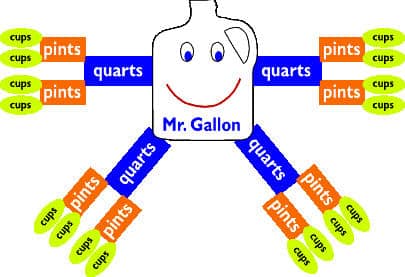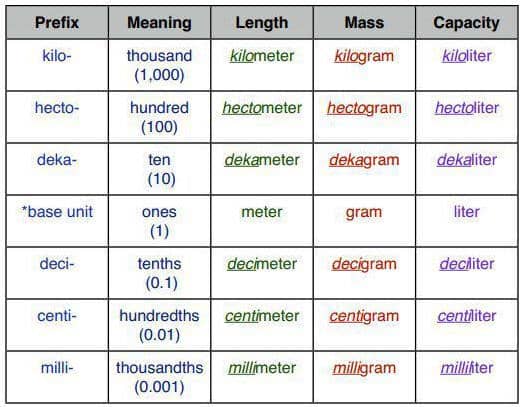
Conversion Gives Students the Chills
Few lessons I cover as a teacher are more dreaded by students and parents alike than teaching how to convert measurement units. Changing between the cups and gallons used in the United States can be tricky enough, let along bringing in the metric system used by other countries. Fortunately, changing units doesn’t have to be a frightening experience. I have found four ways to make converting measurement a little less scary: telling a story, using the body as a ruler, showing pictures to help students visualize, and using strategies to know if you multiply or divide.
Tell a Story
From a student’s perspective, measurement units are often seen as something adults made up to make children suffer. They can seem useless and unhelpful to students, and they can wonder they even have to learn about changing measurement units at all. Using measurement in stories and real-world situations can help students see that changing units is not pointless after all.
Choosing a story or situation based on your child’s interest is a sure way to make measurement a little more welcome. Students who enjoy sports might enjoy changing Olympic Records from metric units into feet or miles. Or, students could write their own metric mysteries by creating a story that uses a metric measurement in some way. Then they could then calculate the measurement conversion to put in the answer. The more the measurements matter to your child, the more motivated they will be.
The Body as a Ruler
Another way I help make measurement conversions a little more tangible is to make it hands on, literally. I have students measure their hands using metric units, and then they see how many hands it takes to measure a familiar object, like the height of the classroom door. By the time they have finished finding the metric answer, those centimeters are not quite so intimidating.
Really, anything that matters to a student makes a great ruler, from a pet to their room at home. However, I usually keep the focus on the students themselves. The measuring your hand activity can also be scaled down to the length of a fingertip (millimeters) or scaled up to the length of an arm (meters). To make measurement conversion personal and more meaningful, what better way than using an actual person?

A Picture is Worth a Thousand Words
The friendly face at the beginning of this post is more than just a picture. Mr. Gallon shows the power of a picture in helping students see the connections between different units. Students can hear the conversion rules over and over (I should know, I’ve tried), but a good picture can help the information click in a way that numbers alone never can.
Of course, even the best of images won’t speak to everyone. Another of my favorite ways to show US liquid measurement is the following. Seeing all the parts nested within one another helps make it clear that the smaller units are the building blocks of the larger ones.
When to Multiply or Divide
Aside from remembering how many centimeters are in a meter or how many kilometers are in a mile, the other tricky part of converting is knowing whether to multiply or divide with the conversion number. For example, say we know something weights 3 kilograms, and we want to know how many grams this is. We can check that there are 1,000 grams in 1 kilogram, but now what?

To help, I have my students ask themselves this question: are ending up with a unit that is bigger or smaller? In the case of the 3 kilograms, we are ending up with grams, which are smaller than the kilograms we started with. So since we are “breaking apart” the big kilograms into smaller grams, we multiply 3 x 1000 to get 3,000 grams. Multiplying gives us more, and we have more in the end if our unit gets smaller.
And this also works in reverse. Say we start with 3,000 grams and need to know how many kilograms that is. 1,000 grams still equal 1 kilogram, but this time we are “trading in” our smaller grams for lager kilogram at the end. So this tells us to divide 3,000 by 1,000 to get 3 kilograms. Dividing gives us less, and we have less in the end if our unit gets bigger.
Converting Units Doesn’t Have to Be Unbearable
Using one or more of the tips above can make converting measurement units a little easier for students and the parents who are supporting them in their studies. As unlikely as it might sound, converting measurement units can even provide some quality time as a family. So pull out that metric ruler, see who has the longest pinky in millimeters, and everyone might just end up with a smile.
Ryan S. is an English / Language Arts and Math teacher in both the classroom and online worlds. His favorite students, however, are his three young children.

